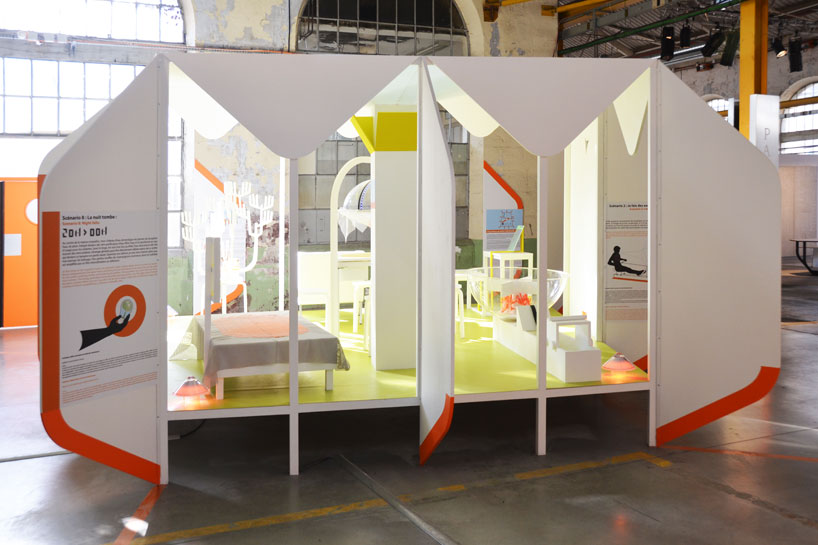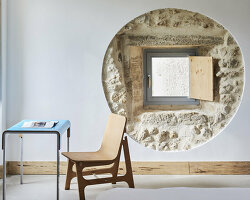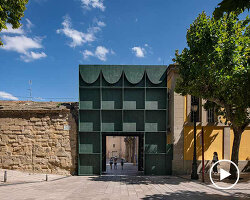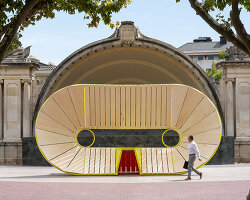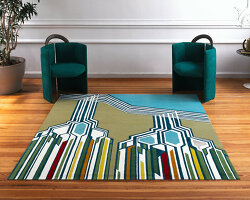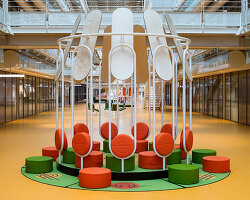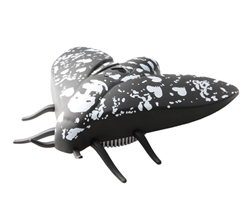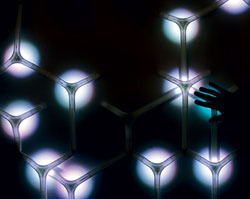’empathic house’ – nano-ordinaire (nano energy concepts) by matali crassetimage © designboom
considering the designer’s role of raising awareness about significant issues and facilitating the potential for change through integrating new systems and concepts into our lives, matali crasset‘s ‘nano-ordinaire’ focuses on the current way in which we generate, store, transmit and use energy, proposing different frameworks in which nano energy becomes the key player in providing clean power to a household,harnessed and stored through our simple everyday actions. the french designer offers nine different scenarios, developed in collaboration with scientific advisor paul-louis meunier, all presented in the form of the ’empathic house’. on show at the 2013 biennale internationale design saint-etienne, the concept dwelling and furnishings shift the status of the consumer into that of a generator or supplier of energy. the project is based on a hypothesis– throughout the course of the day, our actions could generate energy for immediate local consumption by equipment with very low-energy requirements using smart materials that are mini-producers of energy– indicating that we would need to change the way in which we perceive the objects around us, and consider alternative physical relationships with them.
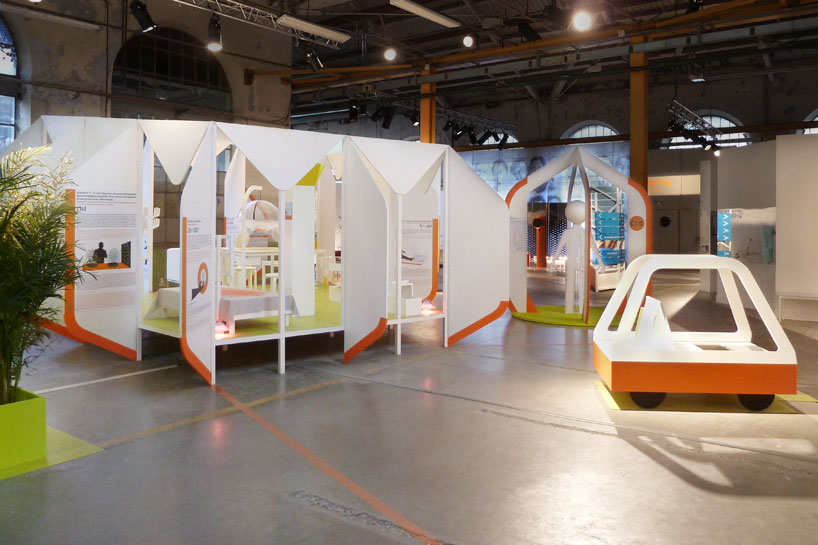 general view of ‘nano-ordinaire’ exhibitionimage courtesy of matali crasset
general view of ‘nano-ordinaire’ exhibitionimage courtesy of matali crasset
the structural revolving wall panels of the home would be wrapped in a breathable skin – a thin layer of osmotic film – that would allow for a one-way flow from the interior to the exterior, instilled as a means of providing more comfortable climatic conditions. they would contain a phased conductive material which liquifies as temperature rises during the day, and solidifies as it cools in the evening, releasing heat– an action which in turn would allow inhabitants to dry their clothes on one of the walls.
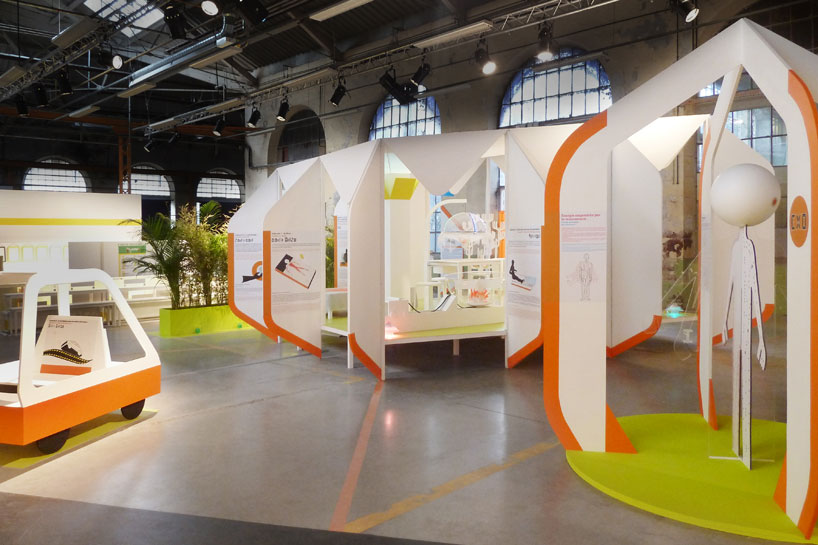 image courtesy of matali crasset
image courtesy of matali crasset
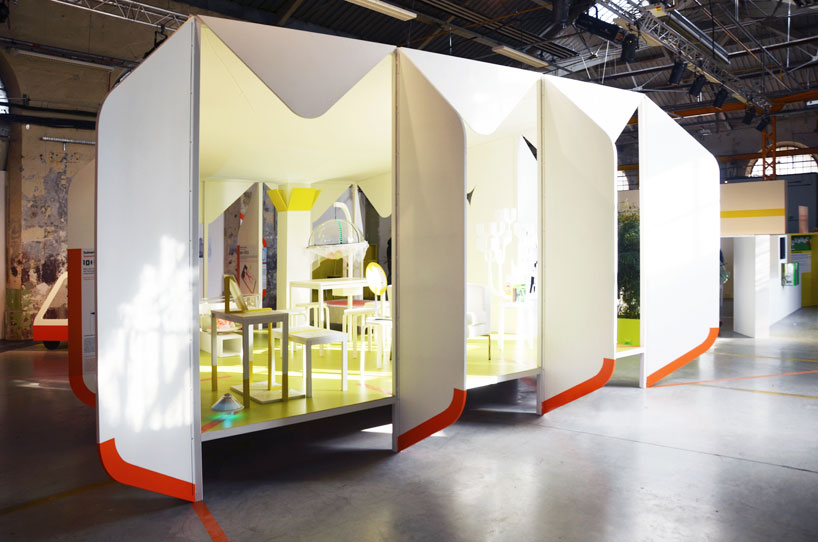 image © designboom
image © designboom
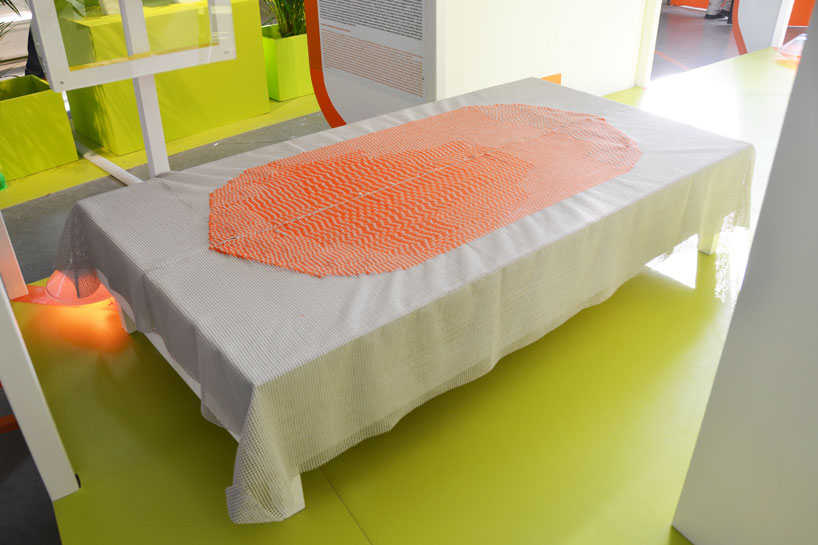 scenario 1: a blanket which stores heat from your body as electrical energyimage © designboom
scenario 1: a blanket which stores heat from your body as electrical energyimage © designboom
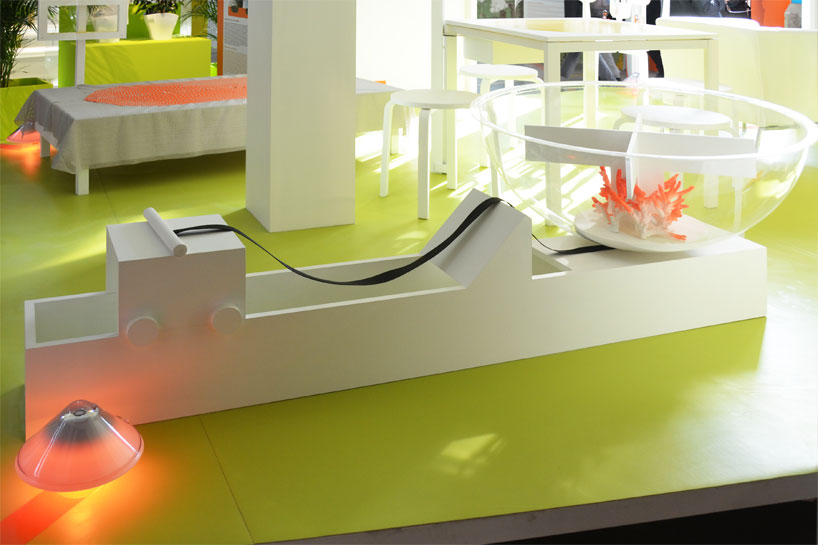 scenario 2: hydraulic rowing machineimage © designboom
scenario 2: hydraulic rowing machineimage © designboom
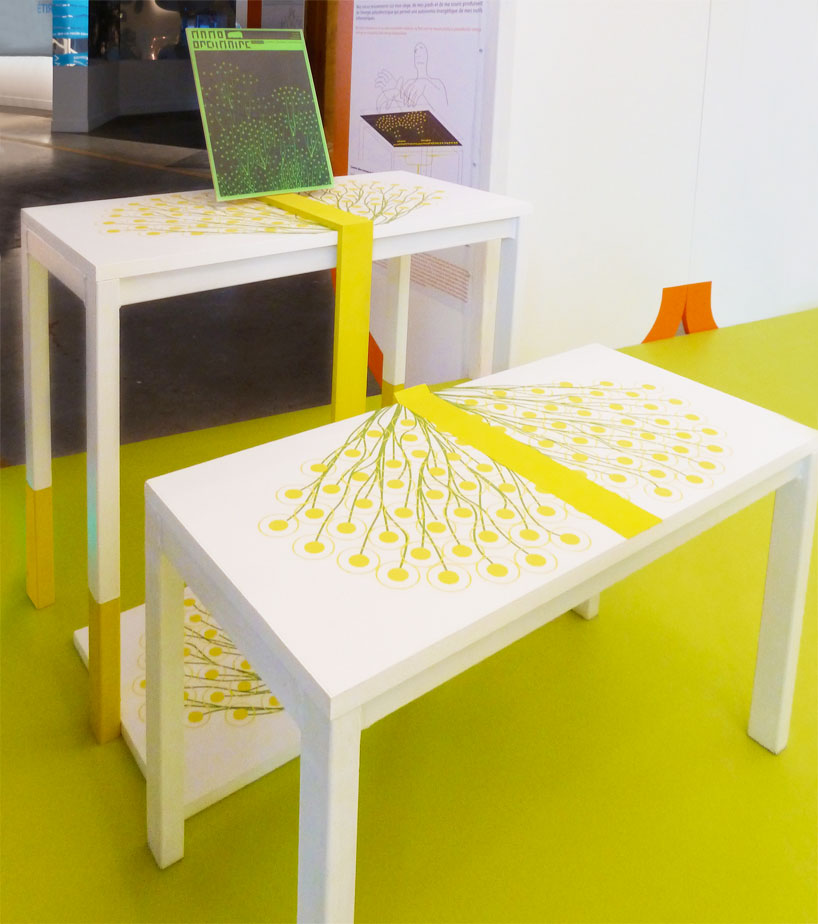 scenario 3: work station which tracks movements made my your hands and feet while sitting at the deskimage courtesy of matali crasset
scenario 3: work station which tracks movements made my your hands and feet while sitting at the deskimage courtesy of matali crasset
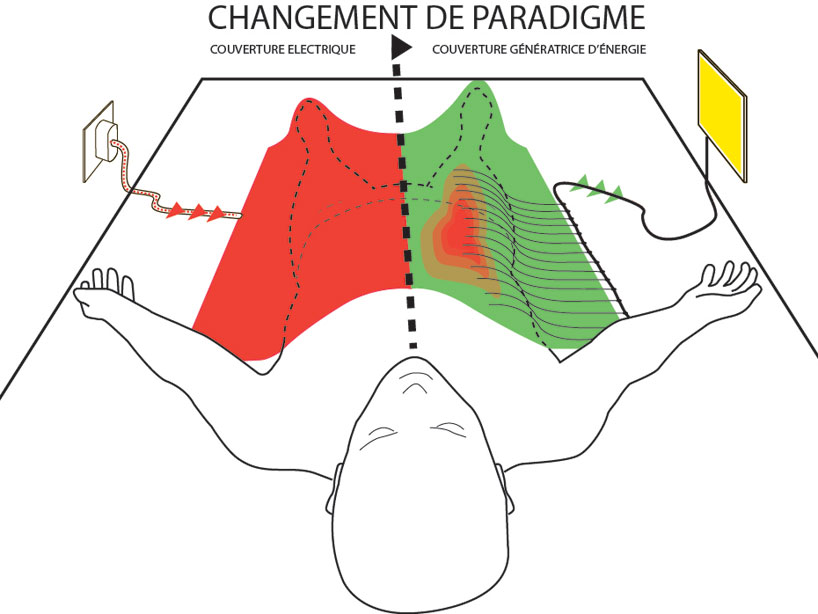 scenario 1: changement de paradigme
scenario 1: changement de paradigme
scenario 1‘I sleep from 00:00-08:00. the fibres in my blanket absorb the heat emitted by my body. by pyroelectricity, this heat is transformed into electrical energy which is stored in the sleeping box supplying an alarm which glows with a soft light when it is time to wake up.‘
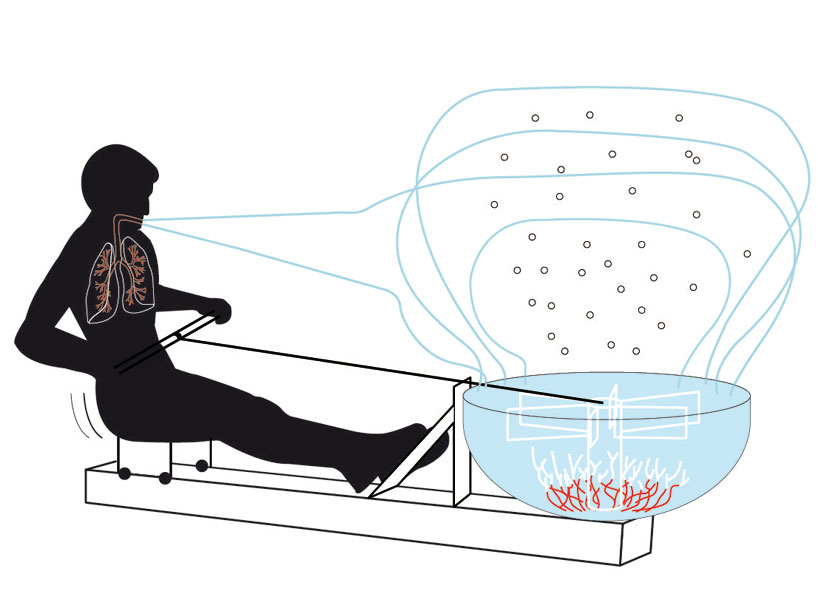 scenario 2: respiration
scenario 2: respiration
scenario 2‘I do my breathing exercises: 09:00-10:00. I do some aerobic exercises on my hydraulic rowing machine. the ripples in the water, like the sea, will absorb the CO2 in the air and convert it back into O2. everyday, the spat at the bottom of the pond collect the limescale and form a domestic coral reef. my house breathes as I breathe in the morning.’
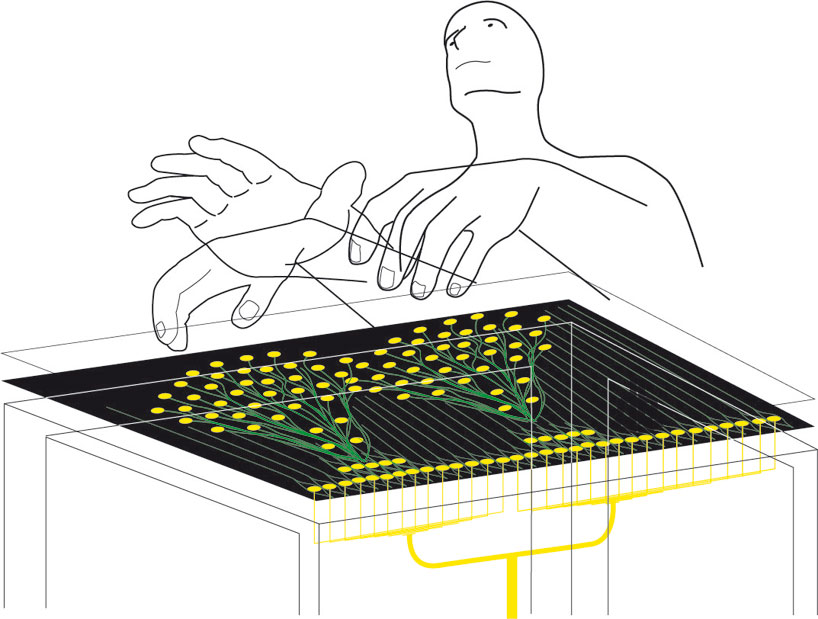 scenario 3: le travail
scenario 3: le travail
scenario 3‘I work at home in my office:10:00-13:00. my micro-movements on my chair and those at my feet and my computer mouse produce enough piezoelectric energy for my computer systems to run from their own energy source.’
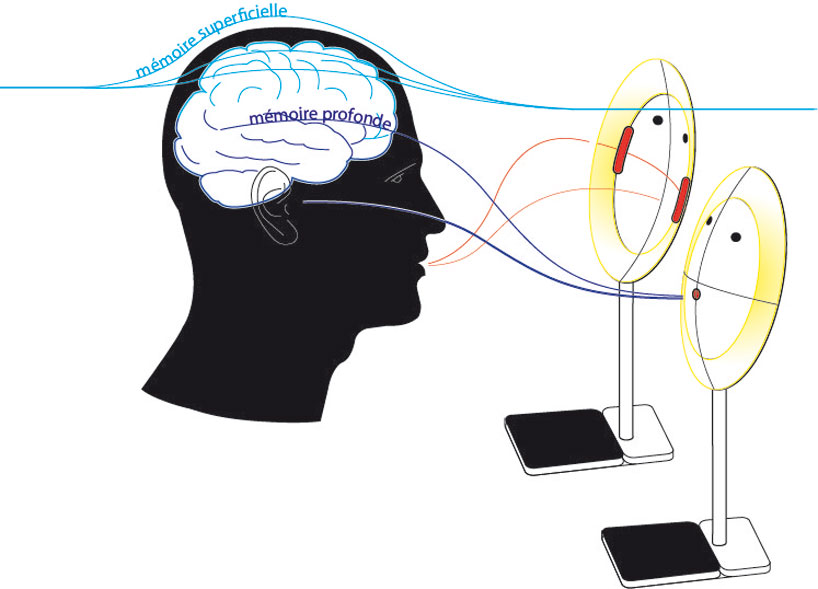 scenario 4: memoire profonde
scenario 4: memoire profonde
scenario 4‘I settle down to read: 14:00-14:30. instead of proposing roaming technological devices that enable us to do many things but which are completely disconnected from us and our experience of space and form, wouldn’t it make more sense to give them a real presence in our everyday scenarios? the system proposes a small portable personal memory called ‘little me’ which responds to various customized extensions that are dispersed or interwoven into the fabric of the house. like the expert systems, these extensions provide us with a perspective on who we are based on our areas of interest and activities. they create a symbiosis of content and periods of time, and activate our deep memory, not just our fleeting or superficial memory. for example: I love reading, I can therefore settle down comfortably wherever I like in the house, taking with me a small dedicated device. as soon as I come near it, it interacts with my personal memory. with the help of the text device, I can start reading: the screen will gently regulate the intensity of light and put my connections with the outside world on hold. I can ask it to explain terminology but I can also ask questions about what I have read previously. it’s a new kind of product that is simultaneously a book (in form and content), a light source, a filter (of time and space) and a literary guide (an extension of me), etc.’
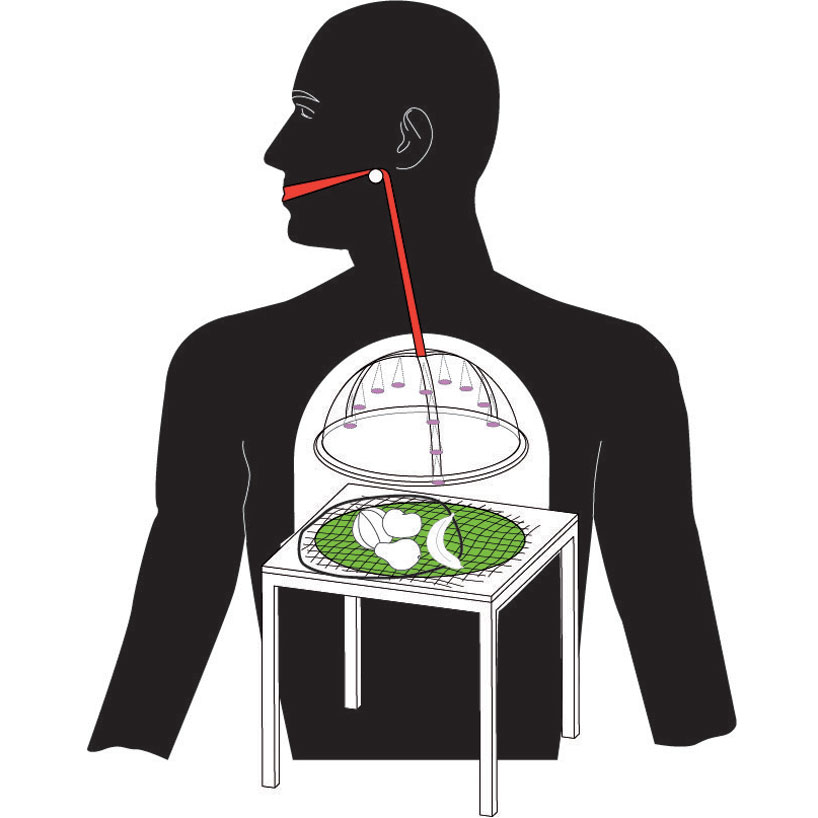 scenario 5: le garde manger
scenario 5: le garde manger
scenario 5‘I have a little snack: 16:00-16:30. I lower the photonic pantry pod. with its specific spectrum of violet light, phototonic energy starts resonating, and breaks the modular chain, destroying bacteria. I can keep fruit and vegetables fresh for several days without needing to chill them, and by consuming very little energy.’
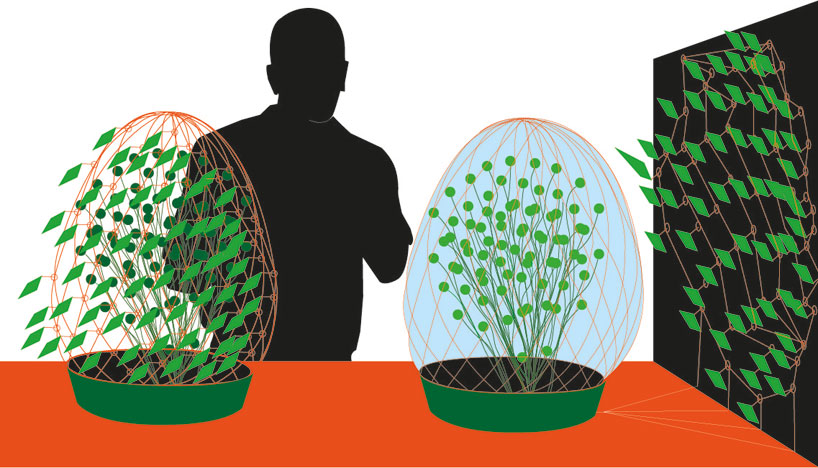 scenario 6: compost
scenario 6: compost
scenario 6‘I put my banana skin in my compost in the garden: 17:00. my organic waste is good for growing trees: one of which is the soap tree that I use to do my washing without the need to use any detergents. my washing dries in record time, spread out on one of the wall panels in the house.‘
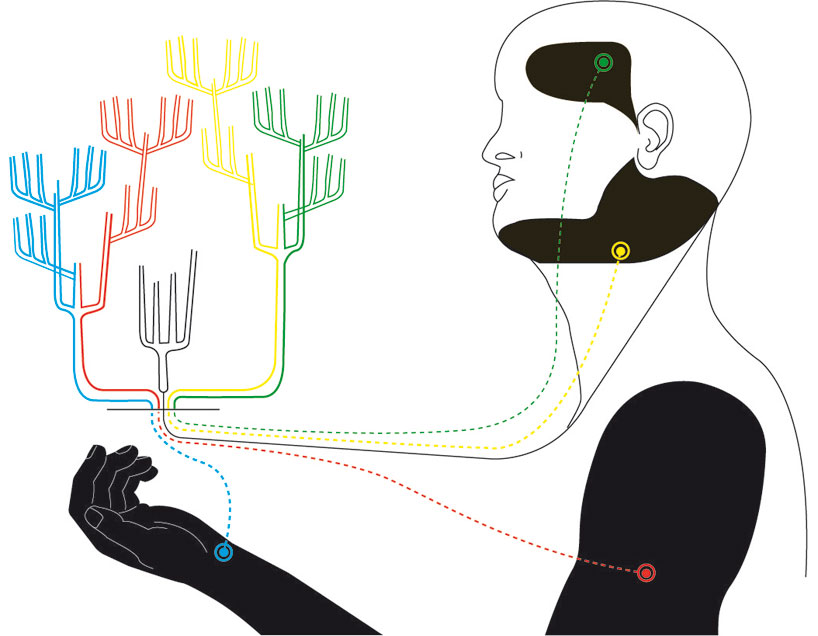 scenario 7: arbre genealogique
scenario 7: arbre genealogique
scenario 7‘I do my health check: 19:00-20:00. a double family tree shows my family’s geneaology and informs me of my genetic background.this treatment is performed by small extensions which can carry out a medical check-up by taking micro-samples. I know that my grandmother is diabetic, so I mus remain vigilant and keep doing regular health check, and my boyfriend had a grandfather who suffered from hypertension…‘
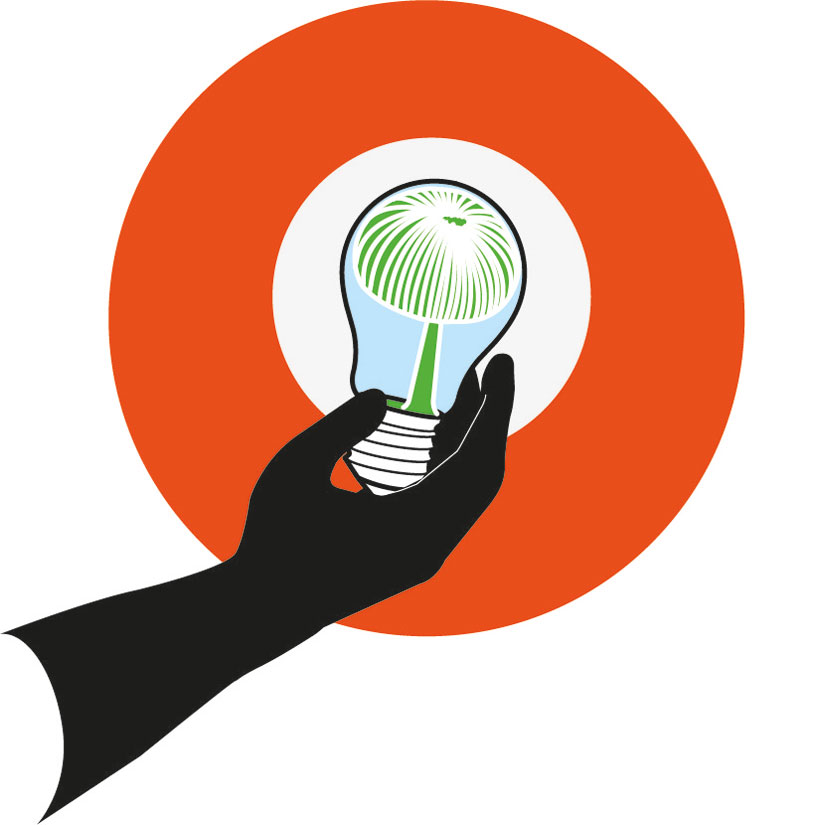 scenario 8: les champignons
scenario 8: les champignons
scenario 8‘night-time: 20:00-24:00. at the centre of my empathic house my domestic water tower collects rain water. the larvae purify and filter the water so that it is fit to be used for the toilets, washing clothes and cleaning floors. once purified, the water goes into and turns mini-turbines. the energy produced can be used immediately in this central area of the house, the top of which turns into an atrium of light. when I go out, I can see the path thanks to the myco-lights marking the way. the light emitted by these small clumps of luminous fungi is made brighter by an intensifying film of selenium.
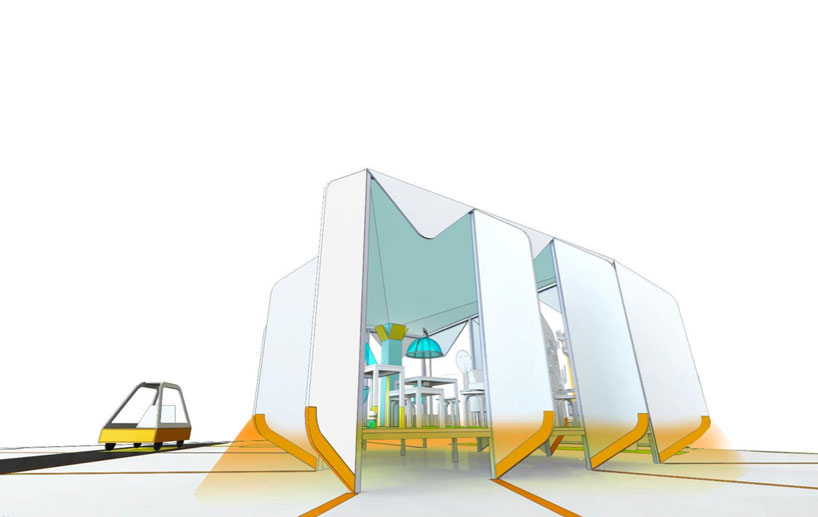 scenario 9: voiture électrique
scenario 9: voiture électrique
scenario 9‘I travel in my electric car: 08:00-08:30. travelling on a road equipped with piezoelectric sensors, enables the car to produce electricity, which is then redistributed at night to charge up other parked cars.’
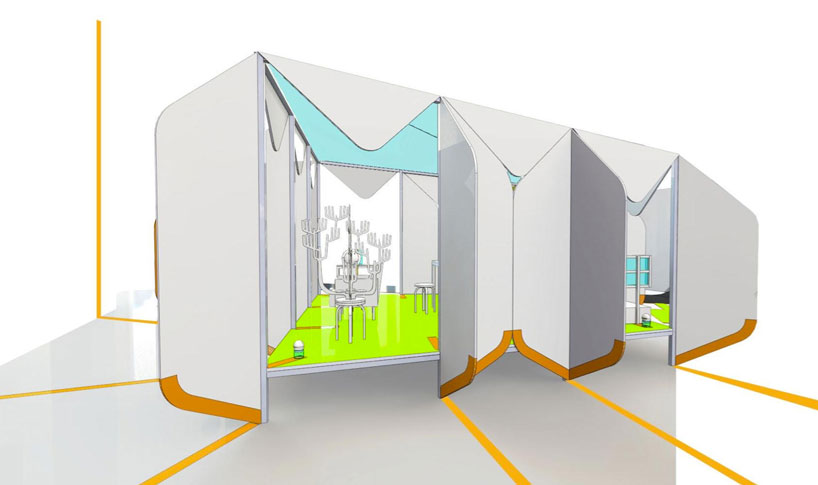 ’empathic house’
’empathic house’
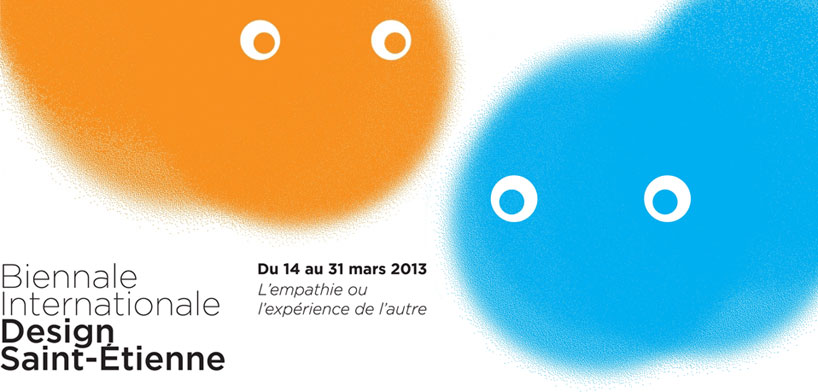 biennale internationale design saint-étienne 8th edition from 14th to 31st march 2013empathy, or experiencing the other50 exhibitions, 29 rendez-vous, 60 places
biennale internationale design saint-étienne 8th edition from 14th to 31st march 2013empathy, or experiencing the other50 exhibitions, 29 rendez-vous, 60 places
created in 1998, the biennale internationale design saint-étienne has established itself as a major design event for the professional and general public, on an international scale. a rendez-vous firmly rooted in innovation, prospective, and research through design.
the 8th edition will run from the 14th through to the 31st march 2013, with the ambition of further developing interactions between the saint-etienne region and designers, local cultural and economic actors, and national and international invited guests. the biennale is taking place throughout the saint-etienne region, hosting more than forty exhibitions at the cité du design and other external sites, along with conferences and events organized by numerous different actors.
MATALI CRASSET (68)
SAINT ETIENNE BIENNALE 2013 (5)
PRODUCT LIBRARY
a diverse digital database that acts as a valuable guide in gaining insight and information about a product directly from the manufacturer, and serves as a rich reference point in developing a project or scheme.
